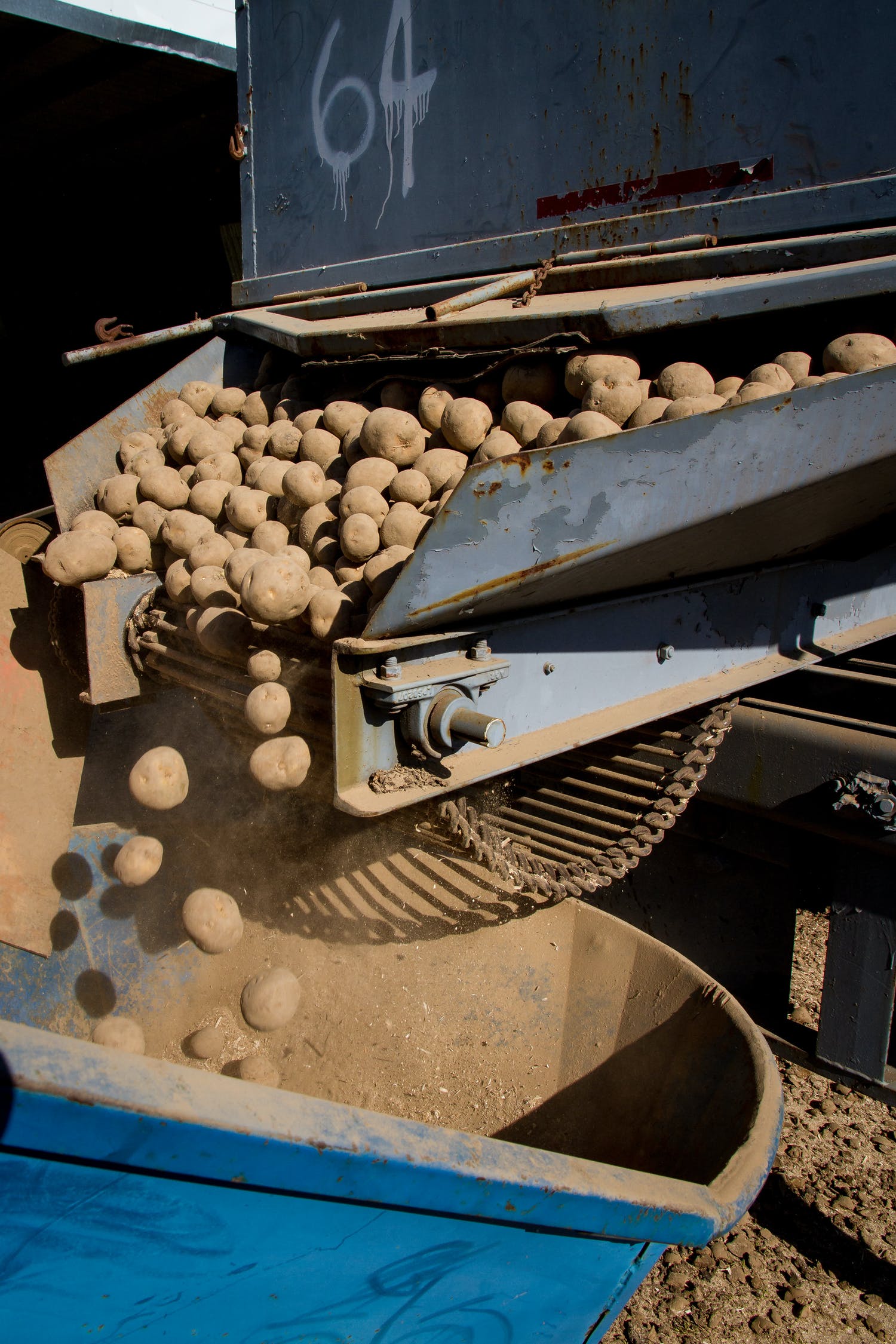People invented agriculture about 10 thousand years ago. However, until a particular moment, changes in this area occurred rather slowly. The Earth’s population was growing, and it needed more and more food and other goods. Simultaneously, the climate was changing, and those changes made people adjust their activities.
The improvement of agricultural technologies, such as the manufacturing of John Deere tractors, made it possible for one farmer in the 2000s to feed eight times more people than in the 40s. But food is not the only part of our daily life that depends on agriculture. Wool, cotton, fuel, and many other necessary things are farm products. And supplying these products to every home now would not have been possible without the rapid improvement and introduction of new farming technologies.
Over the past two centuries, agricultural techniques and systems have been significantly updated due to technical inventions. To better understand how rich in inventions this period was, let’s give an example. Until the 30s of the 19th century, people used a wooden or iron plow. Then the steel plow was invented. Horses pulled it, and with the invention of steam tractors, the plow was attached to such a tractor. In 1892, a gasoline-powered tractor was invented. By the 1920s, this vehicle became indispensable in the fields, as it delivered all the equipment for growing, planting, and harvesting there. Thus, farmers have the opportunity to process large plots of land faster with less waste. And all this happened in less than a hundred years.
In the 21st century, precision farming is actively developing. Due to innovative technologies, it is possible to use tools and data remote sensing of the Earth and geographic information systems. Farmers get the opportunity to control the yield on each separate section of the field, using the indices for calculating the density of green cover (NDVI), moisture of the vegetation cover (NDWI) and other indexes. Growers can prevent potential threats to crops, plan fieldwork for several weeks and analyze its effectiveness using innovative monitoring platforms and apps.
A rotary dryer is a truly innovative and valuable piece of equipment.The primary purpose of using rotary dryers in agriculture is to reduce the moisture content of harvested crops, such as grains, fruits, vegetables, and other agricultural products. This drying process helps to extend the shelf life of the products, prevent spoilage, reduce transportation costs, and maintain the quality of the harvested goods. Rotary dryers are especially valuable in regions where weather conditions are not conducive to natural drying and where large quantities of agricultural produce need to be dried efficiently.
Agricultural Revolution
Until the beginning of the 18th century, wet weather negatively affected the harvest, but the situation had improved significantly by the middle of the century. No one denies the influence of climatic conditions on farming.
Nevertheless, the rise in agriculture was driven not only by climate change. In 1760, the Industrial Revolution began. It affected all spheres of human activity, including agriculture. Steam engines, the horse hoe, seed drills, and other tools were invented. These tools provided more options for growers as more areas were sown.
Humans have practiced crop rotation since ancient times, but this system has undergone significant changes since then. Farmers used alternating cultivation of two fields during the Middle Ages. Then a three-field method was invented.
However, one of the main achievements of the Agricultural Revolution period was the invention of a four-field crop rotation system. This innovation significantly increased productivity of agriculture and positively affected the quality of life. In addition to the advanced crop rotation technique, which provides faster soil restoration, other methods of more rational land use have emerged. Wetlands and pastures began to be converted into arable land. Land reclamation technologies also were a significant invention, as well as soil restoration and drainage systems.
Seed Drill and Cotton Gin
Until the middle of the 18th century, the primary method of sowing was a manual scattering of seeds. The application of a seed drill, invented by John Worlidge and first built by Jethro Tull, meant a reduction in seed consumption. In addition, this invention has resulted in significant savings in time and labor. The main advantage of the seed drill is the mechanization of the sowing process, which means a more accurate and consistent seeding depth. Thus, weather conditions on seedlings have been reduced since they are covered from wind and other natural phenomena. The graded layer of soil that covers the seeds also makes them more protected from rodents and insects.
Eli Whitney is the inventor of another essential tool of the Agricultural Revolution, which completely changed the agricultural industry. Cotton gin significantly reduced the cost of processing cotton since the purification of fibers from seeds was automated and required more manual labor. This machine was also the reason for the cotton yield increase, as its cultivation has become more profitable. One such tool provided up to 25 kg of refined cotton per day.

